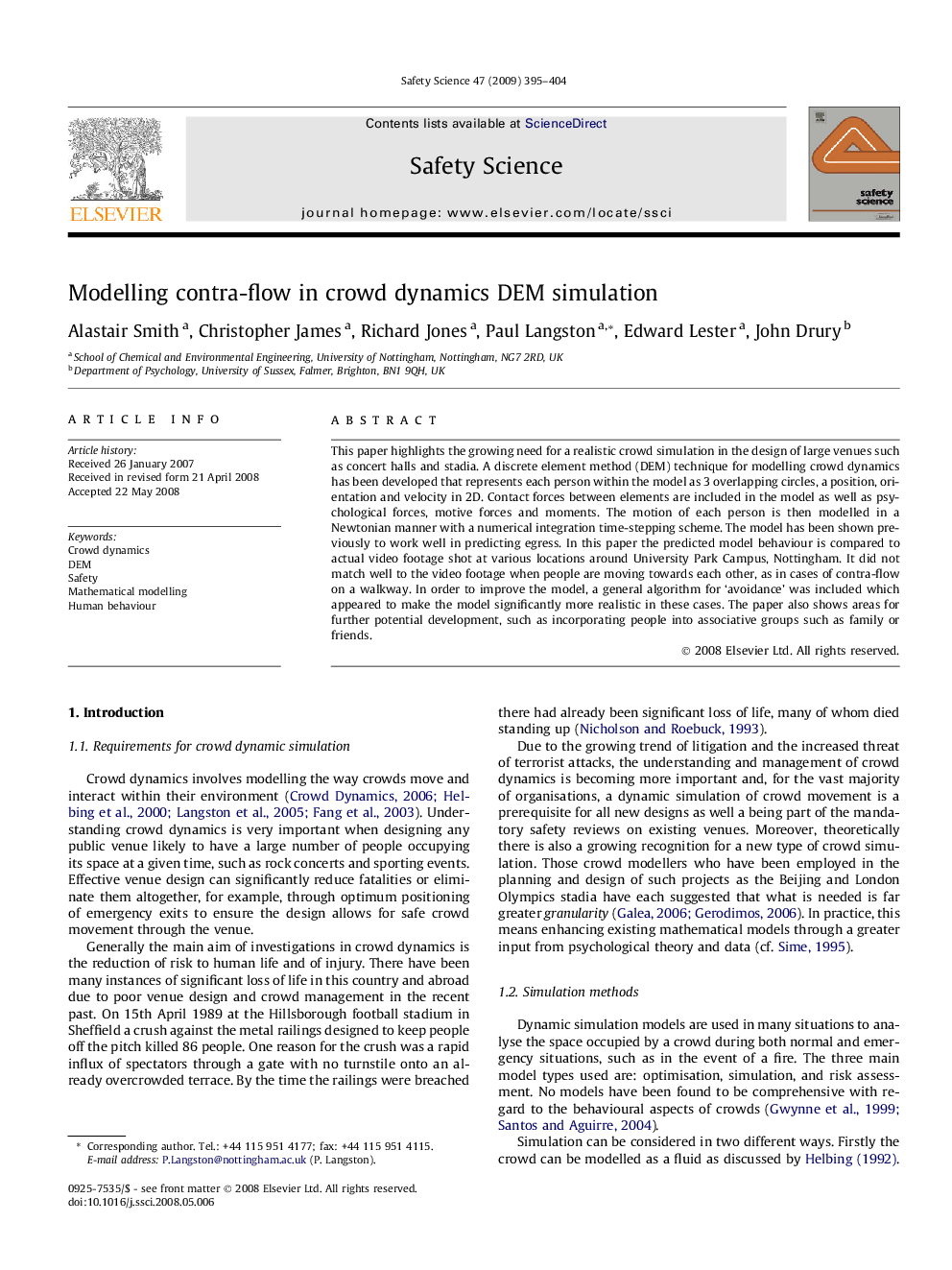| Article ID | Journal | Published Year | Pages | File Type |
|---|---|---|---|---|
| 590066 | Safety Science | 2009 | 10 Pages |
Abstract
This paper highlights the growing need for a realistic crowd simulation in the design of large venues such as concert halls and stadia. A discrete element method (DEM) technique for modelling crowd dynamics has been developed that represents each person within the model as 3 overlapping circles, a position, orientation and velocity in 2D. Contact forces between elements are included in the model as well as psychological forces, motive forces and moments. The motion of each person is then modelled in a Newtonian manner with a numerical integration time-stepping scheme. The model has been shown previously to work well in predicting egress. In this paper the predicted model behaviour is compared to actual video footage shot at various locations around University Park Campus, Nottingham. It did not match well to the video footage when people are moving towards each other, as in cases of contra-flow on a walkway. In order to improve the model, a general algorithm for 'avoidance' was included which appeared to make the model significantly more realistic in these cases. The paper also shows areas for further potential development, such as incorporating people into associative groups such as family or friends.
Related Topics
Physical Sciences and Engineering
Chemical Engineering
Chemical Health and Safety
Authors
Alastair Smith, Christopher James, Richard Jones, Paul Langston, Edward Lester, John Drury,
